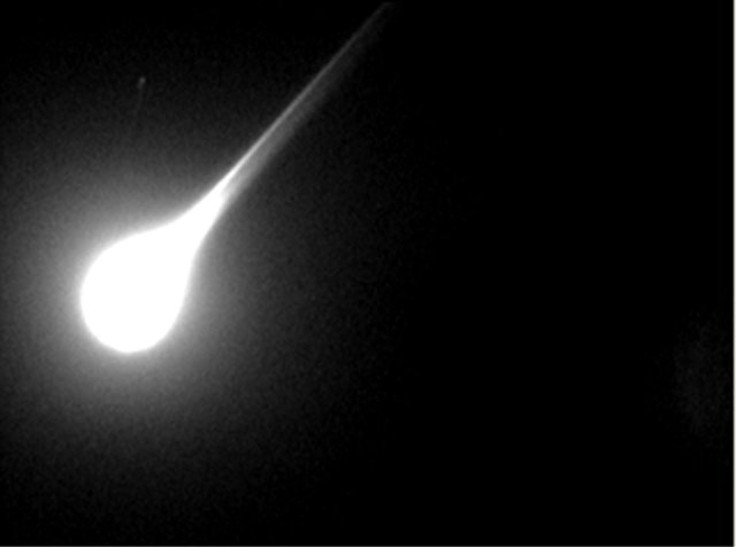Right Place, Right Time: Ship Camera Captures Meteor Breaking Up Over Ocean [VIDEO]
KEY POINTS
- A research vessel's livestream camera captured the moment a meteor broke apart
- The ship's voyage manager noted how fortunate it was that they documented the event
- Such meteors tend to go unnoticed because they often happen in unpopulated places
An Australian science vessel was "in the right place at the right time" to film a meteor breaking apart over the ocean.
The RV Investigator research vessel of Australia's national science agency, Commonwealth Scientific and Industrial Research Organisation (CSIRO), was off the coast of Tasmania on Wednesday when the bridge crew witnessed an "extremely bright meteor" crossing the sky then exploding over the ocean, the news release from CSIRO explained. According to the agency, the meteor was bright green in color and was fortunately caught on camera by the vessel's 24/7 livestream camera.
"It's cloudy with a chance of *checks notes* meteors?" CSIRO said on Twitter, where it shared the footage of the event.
It's cloudy with a chance of *checks notes* meteors? ☄️
— CSIRO (@CSIRO) November 19, 2020
A bright green meteor went over Tasmania this morning. And our #RVInvestigator was able to capture it on our live stream! 🚢
The ship was near south coast of Tasmania where it's currently doing work for @Parks_Australia. pic.twitter.com/H2i4kfe9Pe
In the short clip, one can see the bright light streaming through the sky, even illuminating the nearby clouds, before it appears to dim and break apart.
As the CSIRO news release explained, local media received many reports of the event the next day. However, no other videos or photos of the event have surfaced so far.
"Cameras are everywhere, in our pockets and around our cities, but they have to be pointed in the right place at the right time – RV Investigator was in that place and time," Glen Nagle of CSIRO Astronomy and Space said in the news release.
CSIRO Voyage Manager John Hooper also noted how lucky it was that they actually caught the event on video.
"The meteor crosses the sky directly in front of the ship and then breaks up – it was amazing to watch the footage and we were very fortunate that we captured it all on the ship livestream," Hooper said, according to the news release.
According to the American Meteor Society, meteors are space rocks or bits of space debris that enter the Earth's atmosphere. When a meteor is brighter than the planet Venus, the object is then called a fireball.
As CSIRO's Nagle explained, such space debris actually enters the Earth's atmosphere every day, but they typically go unnoticed because they happen in unpopulated areas such as over the ocean. In the case of this week's meteor, however, the RV Investigator's crew and camera were there to watch its journey.

© Copyright IBTimes 2024. All rights reserved.






















